Meisen Kimono in LA
The spectacular exhibition, Kimono for a Modern Age, at The Pavilion for Japanese Art at the Los Angeles County Museum of Art (LACMA) is a must for anyone interested in design and textiles. Open until 9 October, this is one of eight exhibitions celebrating the 25th anniversary of the pavilion designed by American architect Bruce Goff (1904–1982).
Sharon S. Takeda, senior curator, head of LACMA’s Costume and Textiles Department and the exhibition curator, said of the exhibit: “We are excited to devote an entire exhibition in the Pavilion for Japanese Art to kimono from the first half of the 20th century. The vivid colours and bold graphic patterns, which include both traditional and modern motifs, will not only delight and surprise the viewer, but will shed light on the artistic and cultural changes that took place in modern Japan.”

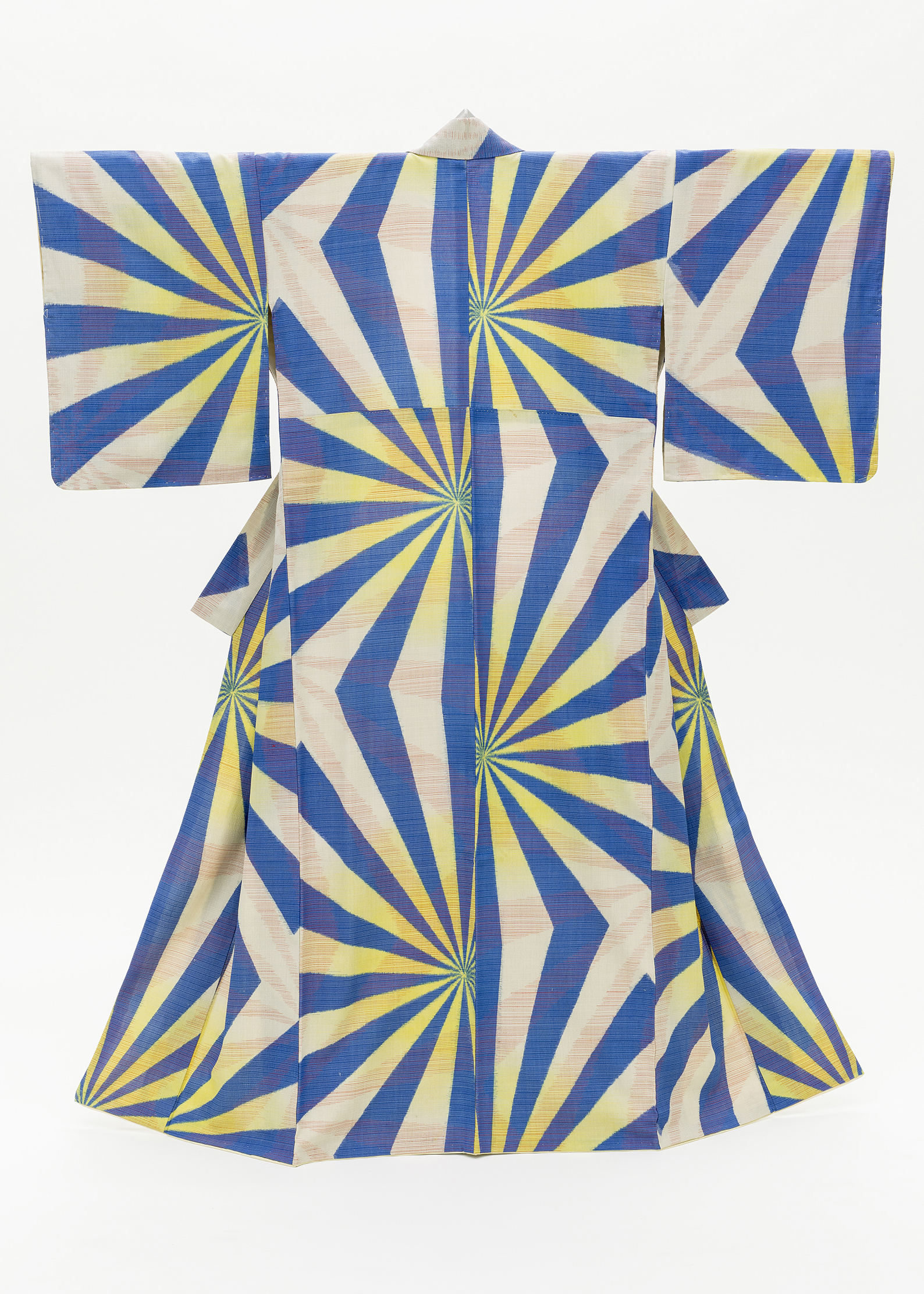
Women’s kimono, early Showa period (1926-89), circa 1940, silk crepe (omeshi meisen), stencil printed warp and weft (heiyo-gasuri meisen). Costume Council Fund, photo 2014 Museum Associates/LACMA
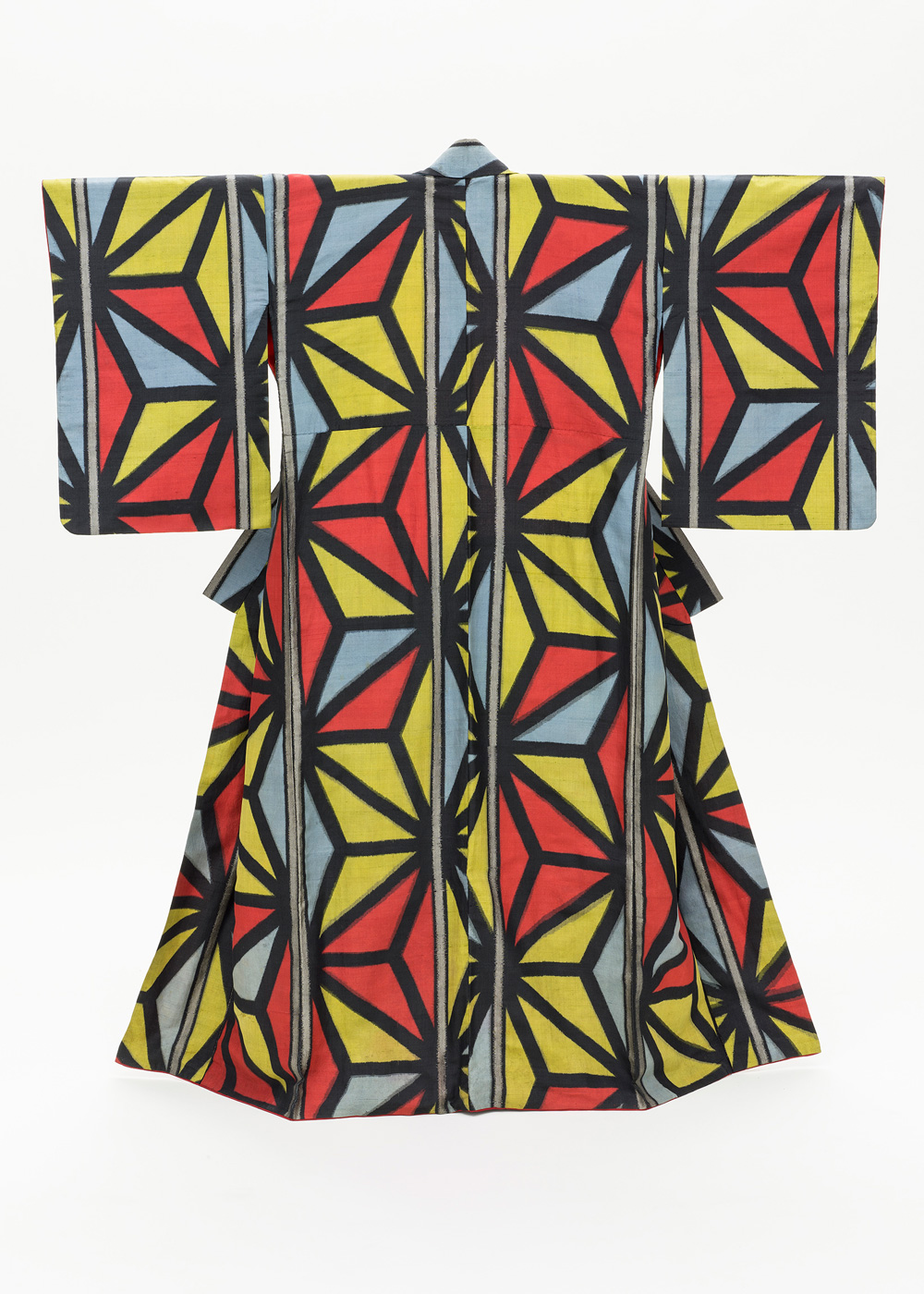
Women’s kimono, early Showa period (1926-89), circa 1935, silk plain weave, stencil printed warp and weft (heiyo-gasuri meisen). Costume Council Fund, photo 2014 Museum Associates/LACMA
An exchange of design ideas between Japan and the west began in the Meiji period (1868 – 1912), which had a profound effect on kimono fuelled by technological advances in synthetic dyes and manufacturing techniques. By the early Shōwa period (1926–89) vibrant and dynamic patterns heavily influenced by modernist art movements such as Art Deco and Abstract Expressionism graced the fabric of kimono. Dramatic results were achieved with bold graphics that contributed to a redrafting of traditional Japanese aesthetics.
Thirty kimono from LACM’s permanent collection are arranged in groups of three in the pavilion’s East Wing. This iconic structure is Goff’s only major public building, which references the traditional Japanese shoji screen in the translucent Kalwall used in the exterior walls; this unusual material allows daylight to enter the galleries in such a way that the weather and seasonal variations have an noticeable effect on the appearance of the works displayed within.
photos © 2014 Museum Associates/LACMA
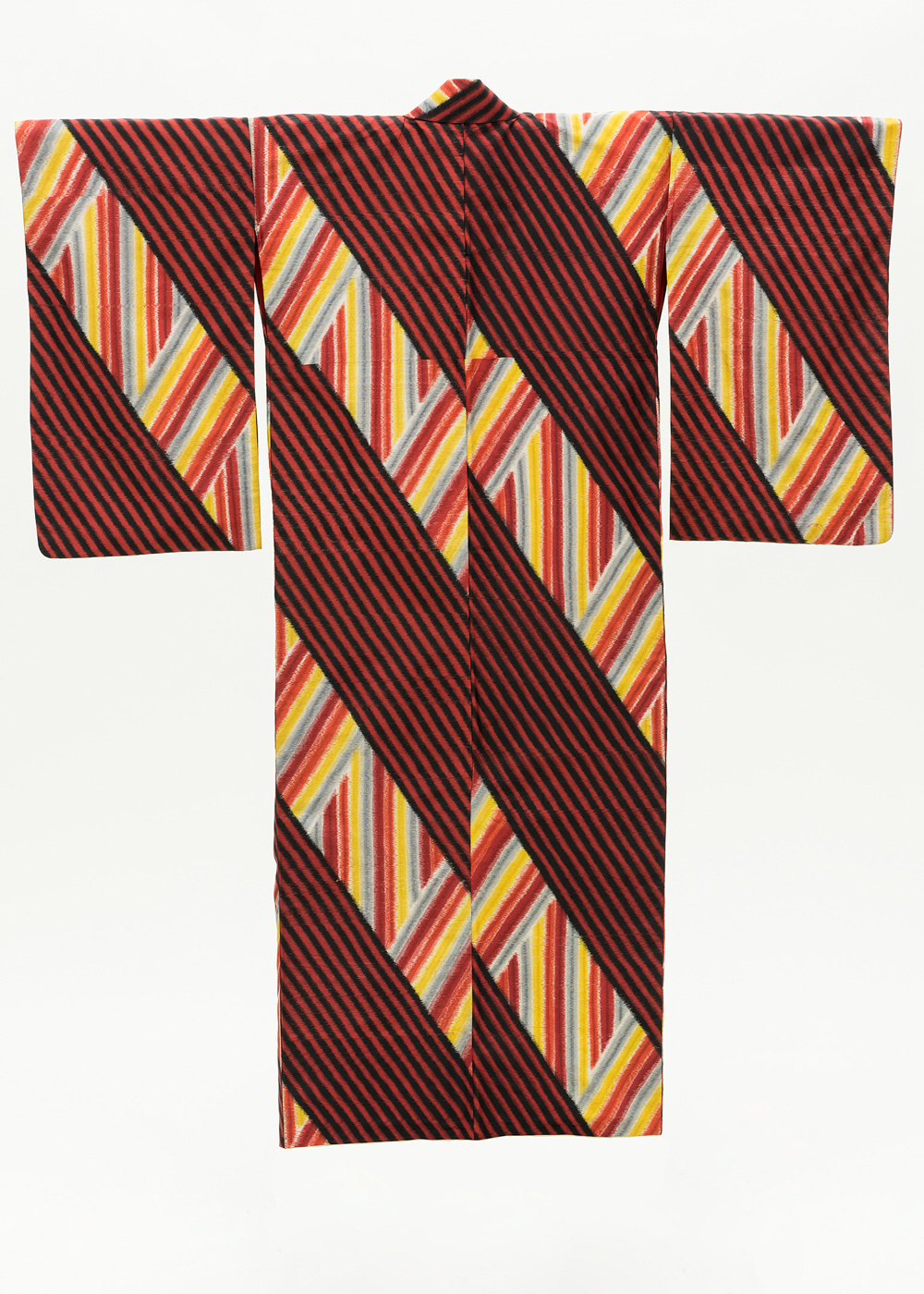
Women’s kimono, mid Showa period (1926-89), circa 1950, silk plain weave, stencil printed warp and weft (heiyo-gasuri meisen). Purchased with funds provided by Grace Tsao, photo 2014 Museum Associates/LACMA

Women’s unlined kimono (hitoe), early Showa period (1926-89), circa 1940, silk plain weave, stencil printed weft (yokoso-gasuri meisen). Purchased with funds provided by Grace Tsao, photo 2014 Museum Associates/LACMA
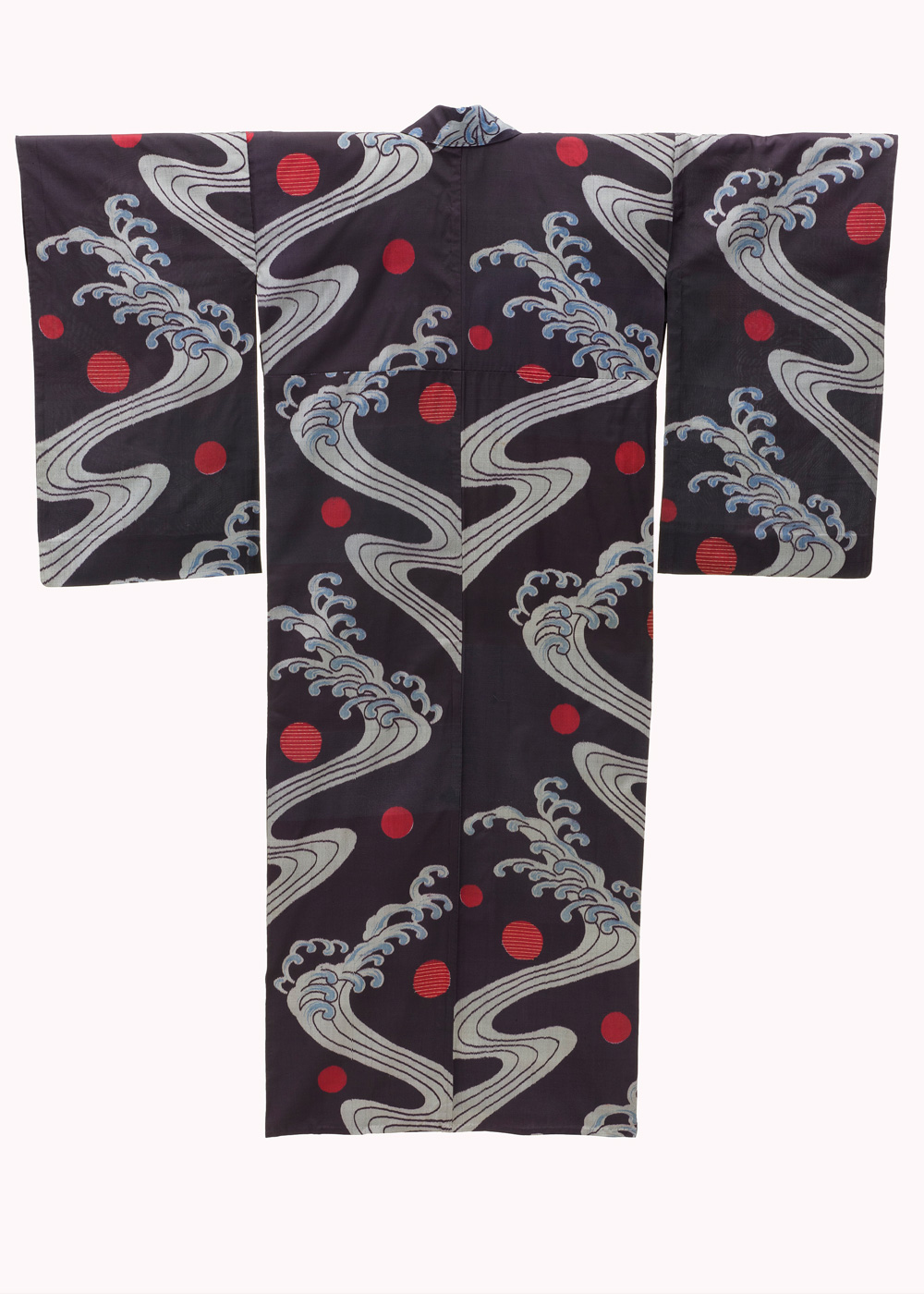
Women’s unlined kimono (hitoe), early Showa period (1926-89), circa 1935, silk crepe (omeshi meisen), stencil printed weft (hogushi-gasuri meisen), aluminium wrapped thread. Costume Council Fund, photo 2014 Museum Associates/LACMA
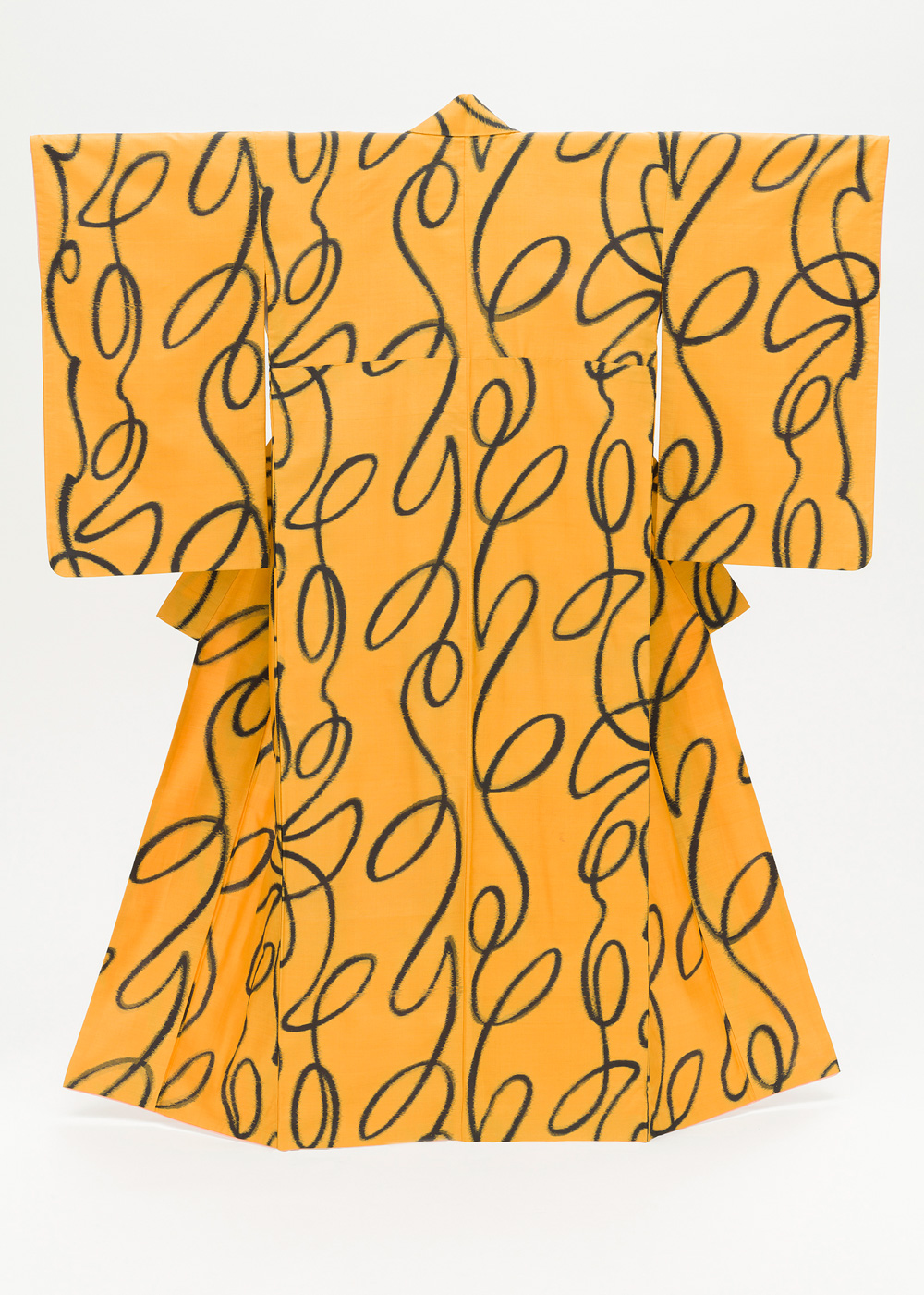
Women’s kimono, mid Showa period (1926-89), circa 1950, silk plain weave, stencil printed warp and weft (heiyo-gasuri meisen). Costume Council Fund, photo 2014 Museum Associates/LACMA
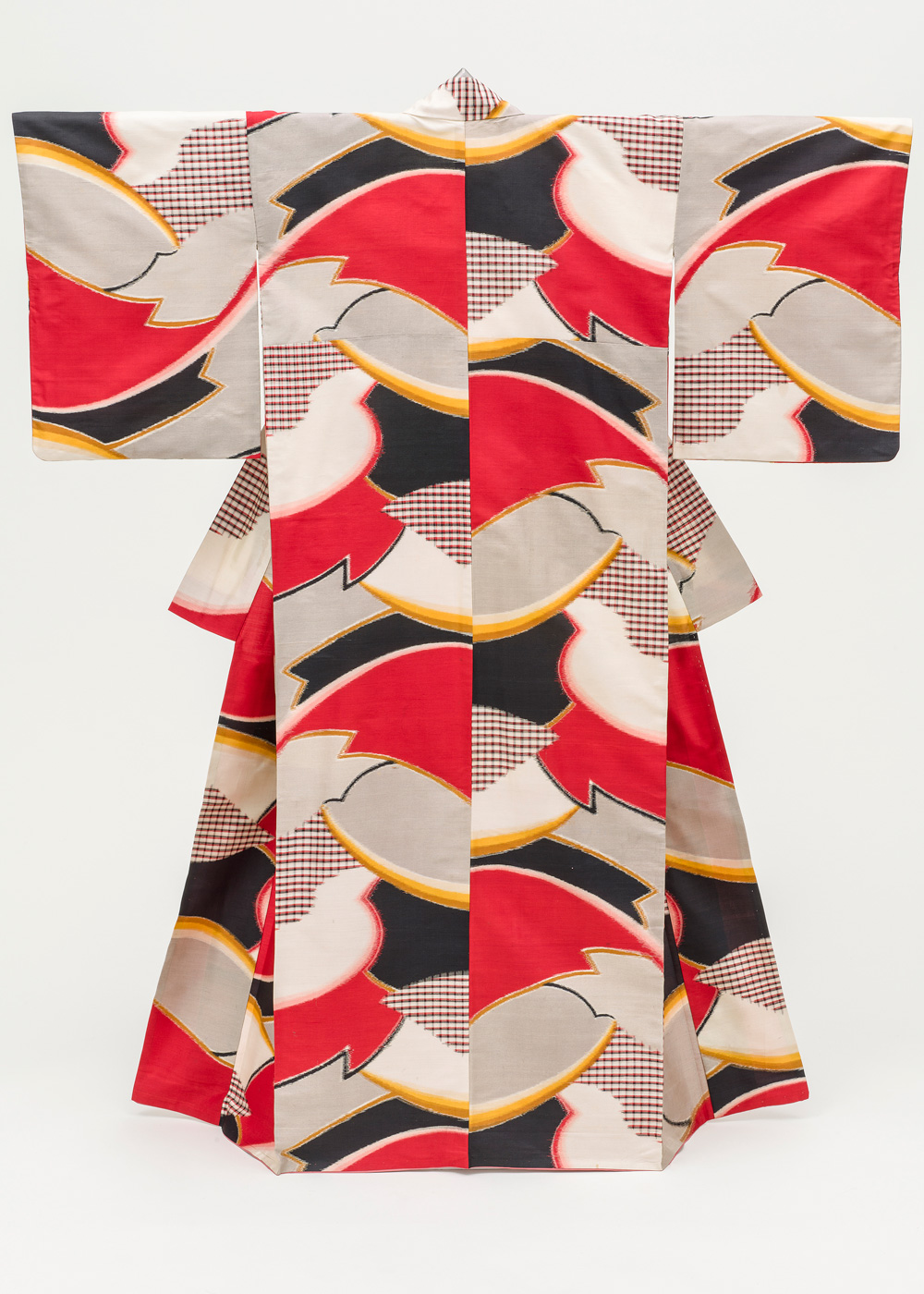
Women’s kimono, mid Showa period (1926-89), circa 1950, silk plain weave, stencil printed warp and weft (heiyo-gasuri meisen). Purchased with funds provided by Grace Tsao, photo 2014 Museum Associates/LACMA
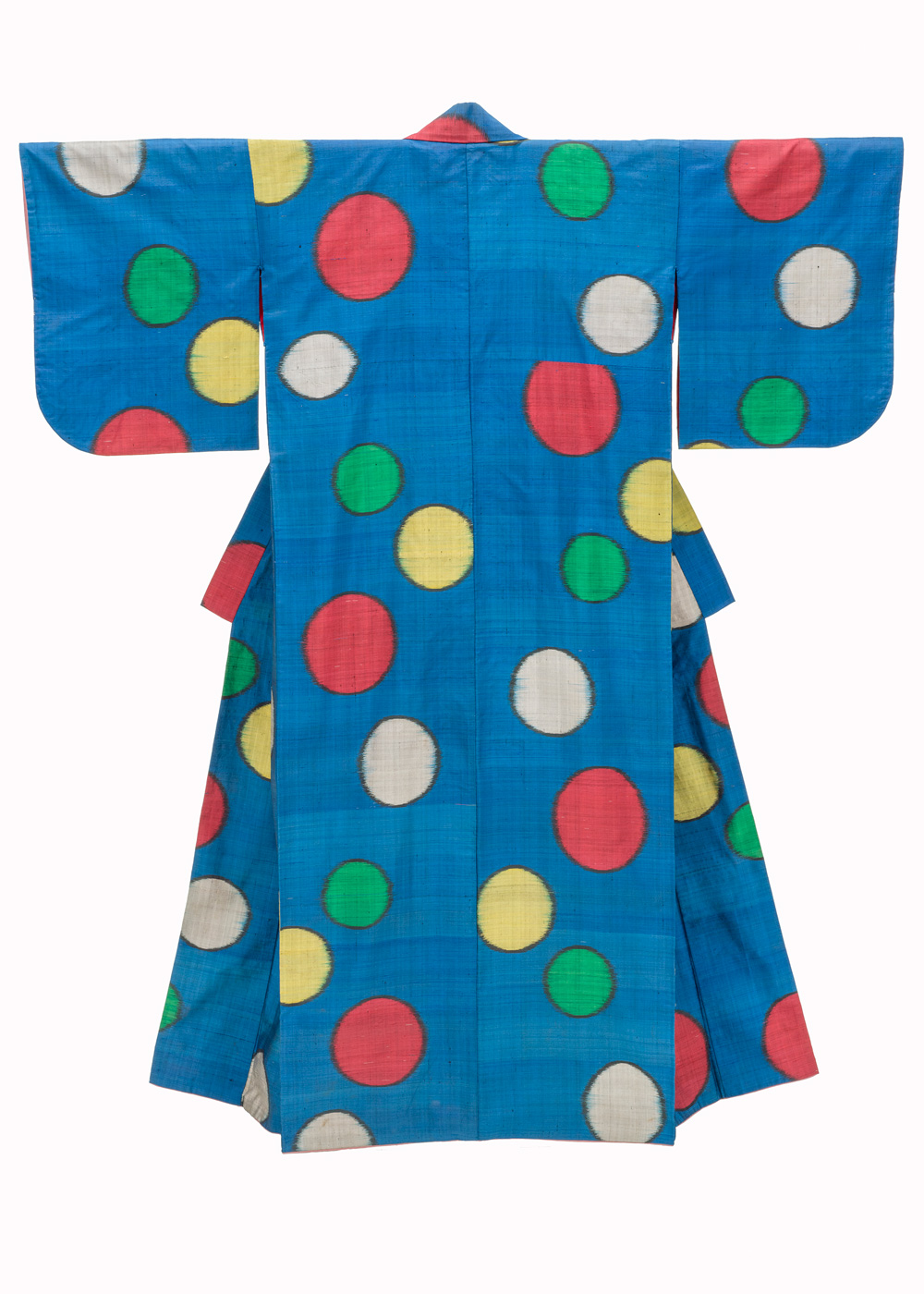
Women’s kimono, early Showa period (1926-89), circa 1935, silk plain weave, stencil printed warp and weft (yokoso-gasuri meisen). Purchased with funds provided by Grace Tsao, photo 2014 Museum Associates/LACMA
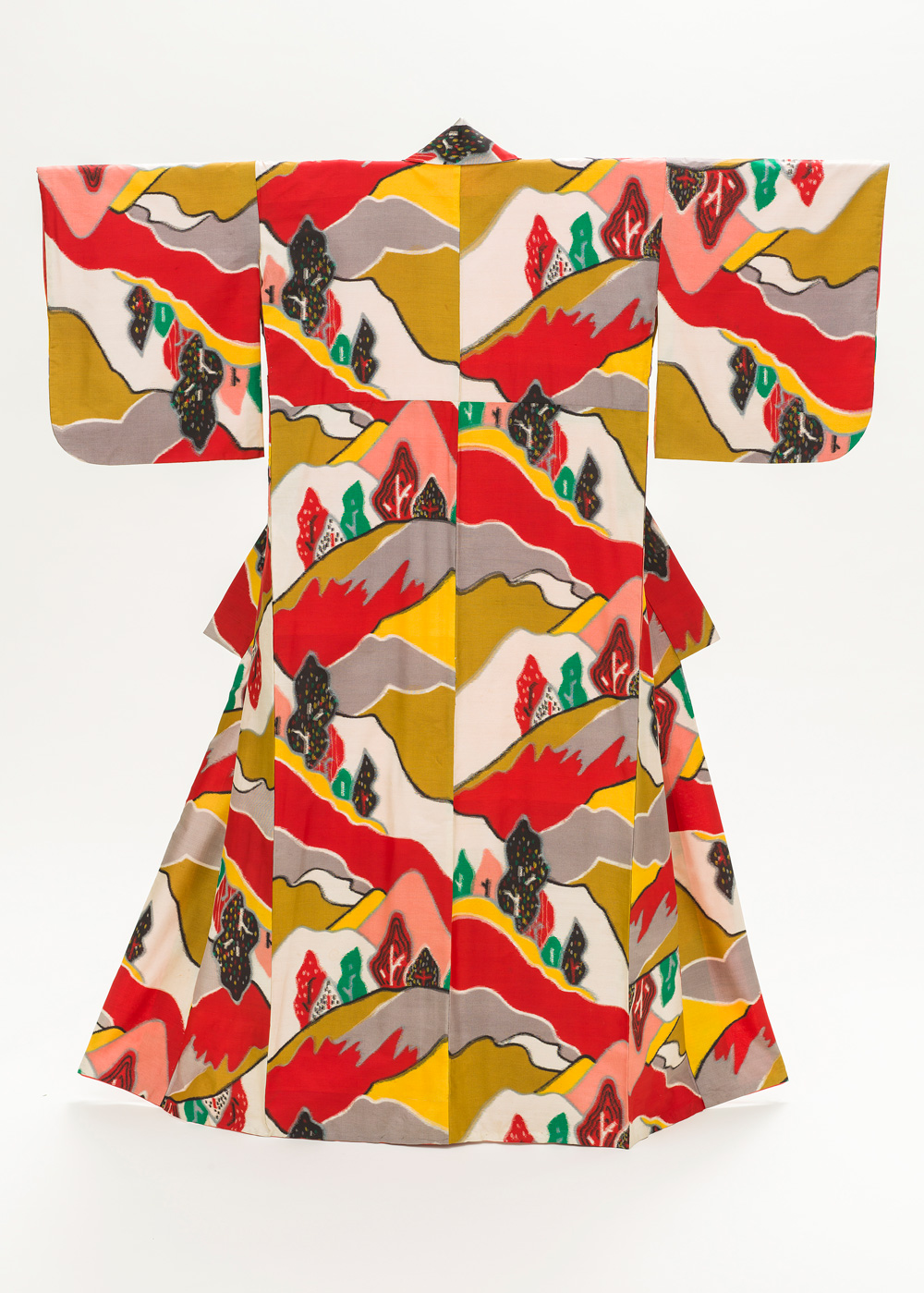
Women’s kimono, mid Showa period (1926-89), circa 1950, silk plain weave, stencil printed warp and weft (heiyo-gasuri meisen). Purchased with funds provided by Jacqueline Avant, photo 2014 Museum Associates/LACMA



























Comments [0] Sign in to comment